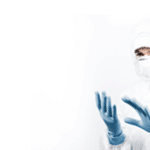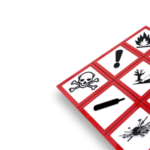Introduction
Clinical and research environments may be host to a variety of biohazards. These environments include clinical and microbiological laboratories; biomedical research and biotechnology facilities; teaching and training laboratories; and other healthcare facilities, such as clinics, health centers, and hospitals.
Biosafety guidelines and regulations are necessary for personnel working in various facilities that handle biohazards. Examples of biohazards include humans, animal and plant pathogens, prions, genetically modified organisms and microorganisms, and potentially infectious human materials.
The safe storage, handling, transport, and disposal of biohazards is essential to protect the safety of staff and communities. Biosafety standards and regulations aim to minimize the number of laboratory-associated infections and related injuries.
Biosafety program oversight is a continuous process that involves identifying, assessing (evaluating), controlling, and monitoring risks. The components of the overall risk management process are1:
- Identify the risks and hazards
- Evaluate the risks
- Define the controls
- Communicate risks to employees
- Implement the risk mitigation controls
- Evaluate the effectiveness of the controls, and adjust as necessary
- Establish an effective training program
- Establish an effective accident investigation program
The Roles of the Principal Investigator (PI) and Institutional Biosafety Committee (IBC)
Principal investigators (PIs), working closely with lab managers and students, are responsible for ensuring a safe work environment. PIs must develop written risk assessments for the research studies in their laboratory spaces and submit them to the Institutional Biosafety Committee (IBC). The IBC then reviews and confirms that all the applicable hazards have been identified and appropriate control methods are in place.
In general, an IBC is responsible for various activities, such as reviewing and assessing the biosafety containment level of research involving recombinant DNA or synthetic nucleic molecules and other hazardous materials. Among other things, this includes assessing facilities, procedures, practices, occupational health measures, and training and expertise of personnel involved in the research.
Assessing Risks
Biological agents are classified into risk groups on a scale from 1 to 4, based on the level of danger to the individual and the community. Agents in Risk Group 1 do not cause disease in healthy adults and are considered low risk for people handling them. Risk Group 4 is the highest risk level. It consists of agents capable of causing severe disease and death.
In addition to identifying the biohazard, risk assessment involves:
- Reviewing the inherent risks associated with the biohazard
- Considering the proposed procedures involving biohazardous materials
- Evaluating the personnel who have exposure to the biohazard
The risk groups assume that those handling them are healthy adults. Personnel may have increased risks due to immune suppression or other factors. They should be advised about how to obtain an evaluation from a trained professional who can provide medical clearance as part of the authorization process to work with these agents. They should also be advised about the importance of self-reporting.
Laboratory Biosafety Levels
The U.S. Centers for Disease Control and Prevention (CDC) sets Biosafety Levels (BSL) as a way of exhibiting specific controls for the containment of microbes and biological agents. The levels are aligned with the severity of the biohazard risk described earlier.
There are four levels, each with specific controls for the containment of biohazard agents. Each level has guidance for laboratory practices, safety equipment, and facility construction.
The biosafety levels range from BSL-1 to BSL-4, with each level building on the controls of the level before it. A basic lab setting that uses agents that pose a minimal potential threat to lab workers and the environment is generally considered BSL-1, the lowest biosafety lab level. Many U.S. institutions and companies with infectious disease research programs have BSL-2 and BSL-3 laboratory suites required to perform their research. A specialized research laboratory that deals with potentially deadly agents, such as Ebola, will be designated as BSL-4, the highest and most stringent level.
BSL-4 labs are rare. In the United States, federal agencies such as the CDC and the U.S. Army sometimes run BSL-4 labs. They are extremely isolated in their own buildings with separate air intake and exhaust, as well as separate decontamination systems.
According to the CDC2, lab levels are determined by the following:
- Risks related to containment
- Severity of infection
- Transmissibility
- Nature of the work conducted
- Origin of the microbe
- Agent in question
- Route of exposure
Biosafety Work Practices
Biosafety work practices are designed to contain biohazards as close as possible to their use point, which will minimize the opportunities for personal exposure or the spread of contaminants to other locations.
There are seven foundational biosafety work practices that apply to all levels of laboratories. They are:
- Do not eat, drink, or smoke in the laboratory. Keep your hands away from your eyes, nose, or mouth.
- Do not pipette liquids by mouth.
- Wear PPE in the laboratory, including lab coats, gloves, and face protection.
- Minimize or eliminate the use of sharps whenever possible. If it is not possible, be very careful with sharps and their disposal.
- Minimize the potential for aerosols or contain aerosols as close as possible to their source.
- Disinfect work surfaces and equipment after use.
- Wash your hands frequently, including after removing gloves and clothing, and immediately before leaving the laboratory.
Using Biosafety Cabinets
A common feature in a laboratory that handles biohazards is the biosafety cabinet, which is an enclosed, ventilated workspace. Biosafety cabinets are designed to provide a clean work environment and protect personnel and products. By combining continuous airflow and specialized HEPA filters, personnel are protected from aerosols that may arise from the handling of potentially hazardous micro-organisms.3
Biosafety cabinets are classified based on the degree of biocontainment they provide. Class II biosafety cabinets are the most common in laboratories.4
Biosafety and COVID-19
The CDC continuously updates guidance for clinical laboratories that handle specimens associated with COVID-19. According to the guidance, cultures of SARS-CoV-2 should be handled in a BSL-3 laboratory using BSL-3 practices.
Managing Risks
Three basic tenets of biosafety and risk management include:
- Application of good microbiological work practices
- Use of safety and containment equipment, such as personal protective equipment (PPE) and engineering controls
- Consideration of secondary containment in the design of laboratory facilities
The primary objective of a biological safety program is to ensure a safe working environment for personnel working with biological agents and protect the surrounding communities. PIs, working closely with the IBC and other stakeholders, are responsible for the assessment and reduction of risk.
The Importance of Training
A critical factor in risk management is to ensure that all PIs and staff members are adequately trained to safely work in these environments. Most institutions require this training to be documented as part of the submission of research protocols. The National Institutes of Health requires training for personnel that work in labs that handle recombinant DNA or synthetic nucleic acid molecules.
Personnel should have training in relevant safety procedures (such as biosafety, chemical safety, radiation safety, and emergency response). They must also have sufficient education and prior experience handling biohazards.
Personnel handling biohazards must also be trained in the disease outcomes or the signs and symptoms of infection or illness with the biohazards that are used in the laboratory.
CITI Program’s Biosafety and Biosecurity series and BSL-3 Practices and Procedures course are options every organization should consider.
References
1Biological Risk Assessment: Considerations for Laboratories, Centers for Disease Control and Prevention
2 Recognizing the Biosafety Levels
3 Biological Safety Cabinet (BSC): How it Works to Protect You
4 Fundamentals of Working Safely in a Biological Safety Cabinet







